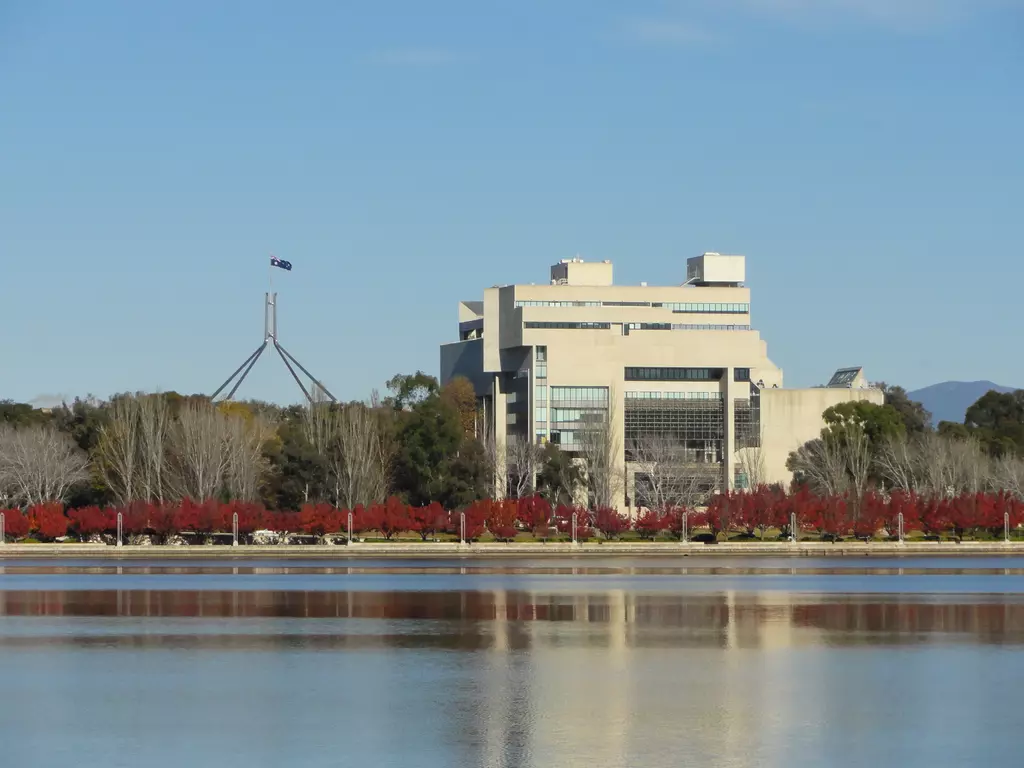High Court of Australia

- The High Court of Australia, located in Canberra, is the highest judicial authority in the country and plays a crucial role in interpreting and applying Australian law. Established by the Australian Constitution in 1901, the court is responsible for constitutional cases, appeals from lower courts, and disputes between states and the federal government. The current building, situated on the shores of Lake Burley Griffin within the Parliamentary Triangle, was officially opened in 1980 and stands as a symbol of Australia’s legal system.
- Designed by Christopher Kringas and Hans Marelli, the High Court building is an architectural masterpiece of modernist design, featuring a striking brutalist concrete structure, towering glass walls, and spacious public areas. The Grand Hall, with its floor-to-ceiling windows, allows natural light to flood the space, creating an open and transparent atmosphere—symbolic of the court’s commitment to justice. The building houses three main courtrooms, each designed to accommodate different types of hearings, including constitutional matters, appellate cases, and special leave applications.
- As the final court of appeal, the High Court of Australia has the power to overturn decisions made by lower courts, shaping the nation’s legal landscape. It has been at the center of many landmark cases, including those related to aboriginal land rights (Mabo v Queensland), freedom of speech, and separation of powers. The court consists of seven justices, including the Chief Justice of Australia, who are appointed by the Governor-General on the recommendation of the Prime Minister and Cabinet.
- Visitors to the High Court can explore the building’s courtrooms, public galleries, and exhibitions, offering insights into Australia’s legal system. Free guided tours provide a deeper understanding of the court’s history, architecture, and judicial functions. Located near the National Gallery of Australia and Parliament House, the High Court is not only a place of law but also a significant cultural and architectural landmark in Canberra, representing the rule of law, justice, and democracy in Australia.
